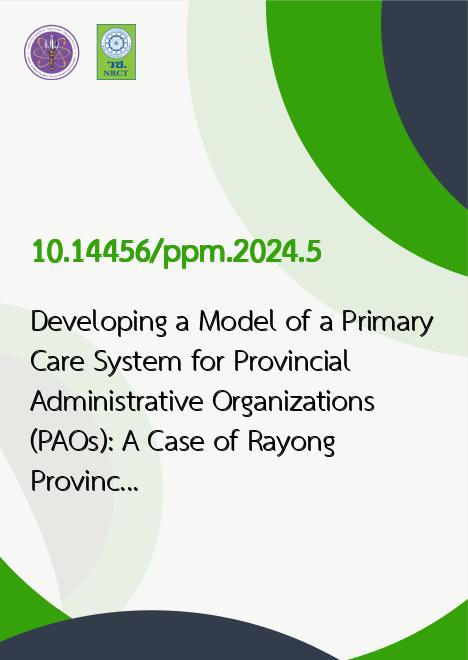
|
Developing a Model of a Primary Care System for Provincial Administrative Organizations (PAOs): A Case of Rayong Provincial Administrative Organization |
|---|---|
| รหัสดีโอไอ | |
| Creator | Achakorn Wongpreedee |
| Title | Developing a Model of a Primary Care System for Provincial Administrative Organizations (PAOs): A Case of Rayong Provincial Administrative Organization |
| Contributor | Tatchalerm Sudhipongpracha |
| Publisher | Graduate School of Public Administration, National Institute of Development Administration (NIDA) |
| Publication Year | 2567 |
| Journal Title | Journal of Public and Private Management |
| Journal Vol. | 31 |
| Journal No. | 2 |
| Page no. | 1-28 |
| Keyword | Model development, primary health system, provincial administrative organization |
| URL Website | https://so03.tci-thaijo.org/index.php/ppmjournal/article/view/272426 |
| ISSN | 2697-6226 |
| Abstract | Current literature raises caution against the indiscriminate application of decentralization and advocates careful formulation of decentralization measures to prevent the unintended perverse consequences. In 2021, Thailand has embarked on a large-scale decentralization reform that resulted in the transfer of 33.21 percent of subdistrict health promoting hospitals (SHPHs) to 49 provincial administrative organizations (PAOs). SHPHs serve the important function of providing primary care services as stipulated in the 2017 Constitution. In Rayong a province along the eastern coast of Thailand, 40 SHPHs were transferred from the Ministry of Public Health (MOPH) to Rayong PAO in 2022. This research sought to understand the problems and obstacles facing Rayong PAO after it became responsible for 40 SHPHs and their primary care function. The research also attempted to analyze how Rayong PAO has managed to solve these problems and planned for the future challenges of primary care. The World Health Organization’s (WHO) six building blocks of a health system was used to guide our research. Data were collected by interviews and focus group discussions. A total of 62 key informants participated in this study.This research found that after decentralization, SHPHs experienced severe staffing shortages, particularly the shortages of physicians and dentists. However, these staffing shortages were chronic organizational problems that existed in the Thai health system prior to decentralization. Confusion arose immediately after SHPHs were transferred to Rayong PAO, as the Thai government did not provide adequate financial resources and clear guidelines on medicines and medical supplies, population health data management, and primary care service provision. Despite all these shortcomings, Rayong PAO demonstrated a coping capacity that enabled it to use all the available resources and networks to ensure the proper functioning of SHPHs. The salient elements of Rayong PAO that contributed to its coping capacity included: (1) the comprehensive health promotion strategy, (2) effective solution for staffing shortages, (3) clear plan for SHPH development, (4) experienced and skilled advisory team, (5) efficient area-based health committee, and (6) strong relationship with the family medical doctors in the area. |